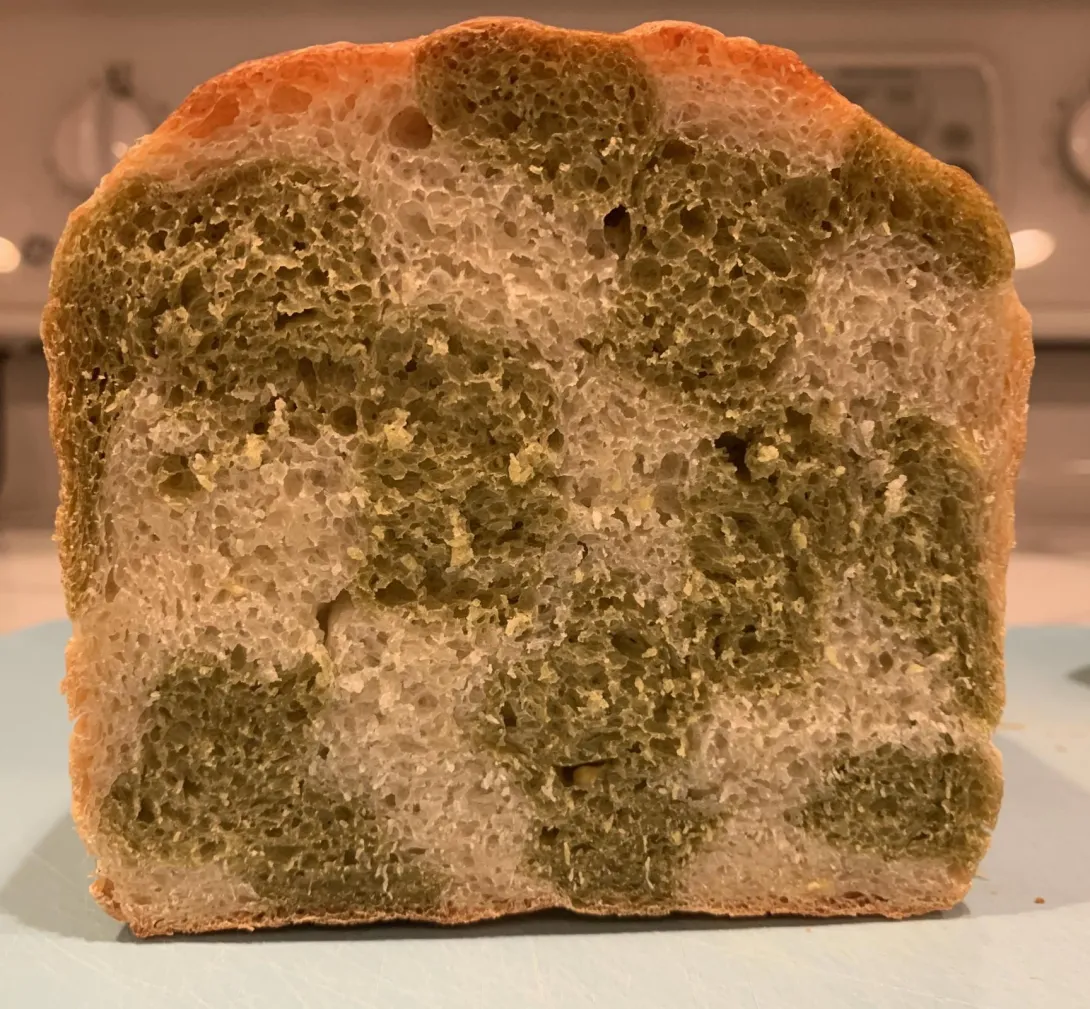
It's funny how you walk by something in a store a thousand times and never notice it. I had never heard of matcha until seeing it in Benny's and Kristi's bakes. Looking for some tea at the store and there it was. Had probably been there all along. So, I decided to get some and come up with a bake for it.
I've been using ginger root in some of my cooking and wanted to try it here. Decided to make a porridge with jasmine rice, honey, and the ginger root. Added the matcha powder to half the loaf and made this checker board pattern. The basis for this bread recipe is a combination of Hamelman's Rice Bread and Danni's porridge breads.
The night before (12-16 hours prior to Final Mix)
Pate Fermente
72g AP flour
48g Bread flour
72g water
2.4g salt
0.2g ADY
Combine all ingredients and mix until just smooth. Ferment at ~70 deg F.
Porridge
40g jasmine rice (mill to coarse flour if you can to reduce cooking time)
6g minced fresh ginger root
20g honey
80g whole milk
Combine all ingredients in pot and cover. Cook on low heat stirring regularly until creamy. Acidity of the ginger root will cause the milk to separate. Keep stirring occasionally until all the free liquid is absorbed. Refrigerate overnight.
Day Of
168g AP flour (divided)
112g Bread flour (divided)
168g water (divided)
5.6g salt (divided)
6g ADY (divided)
1.5 tsp matcha powder
Remove porridge from refrigerator and divide in two halves and add the matcha powder to one of the halves. Divide the pate fermente in equal halves. Divide all final mix ingredients in half.
For each half, combine the ADY with the water. Combine all dry ingredients. Add the water/ADY mixture and the porridge to the dry ingredients and start to mix. Break up the pate fermente into small chunks and add it to the mixture. Continue mixing and focus on breaking up the pate fermente chunks. Fermentolyse 15-20 minutes. Perform 4 sets of bowl kneading to incorporate the pate fermente and develop full gluten. Bulk ferment for 1-2 hours until dough has doubled in size.
Roll out dough into a 18-19cm wide by 30cm long rectangle. Flour each side well to avoid sticking to the counter. After rolling, slice each dough in 2cm wide strips and alternate placing them on parchment paper building a checkerboard pattern that's 5 strips wide. Lightly mist each layer when built to make sure the next layer sticks to it. When complete, lower the loaf into a pan using the parchment paper as a sling. When in the pan, lightly press the dough to spread it into the pan and make sure the loaf is solid.
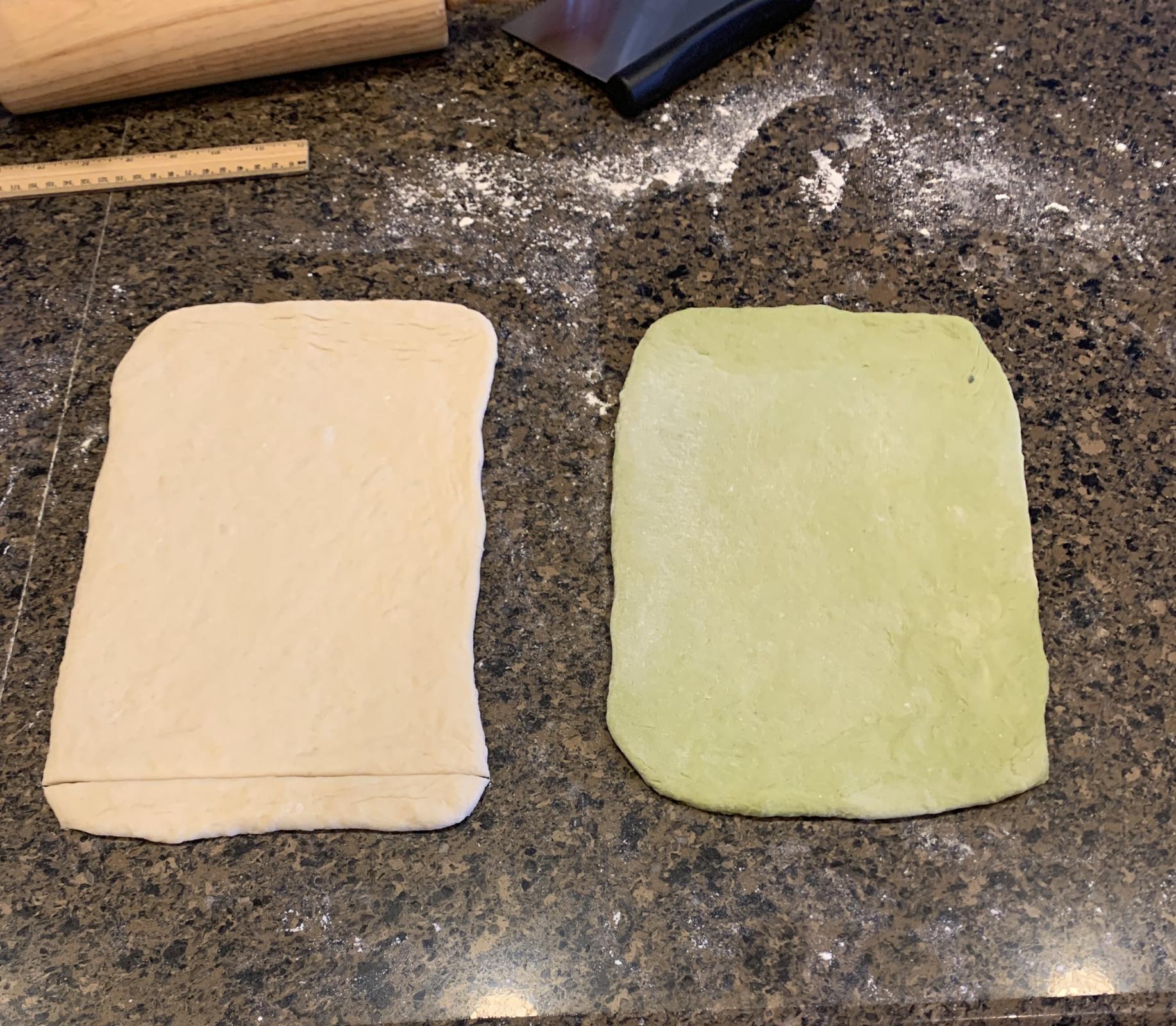
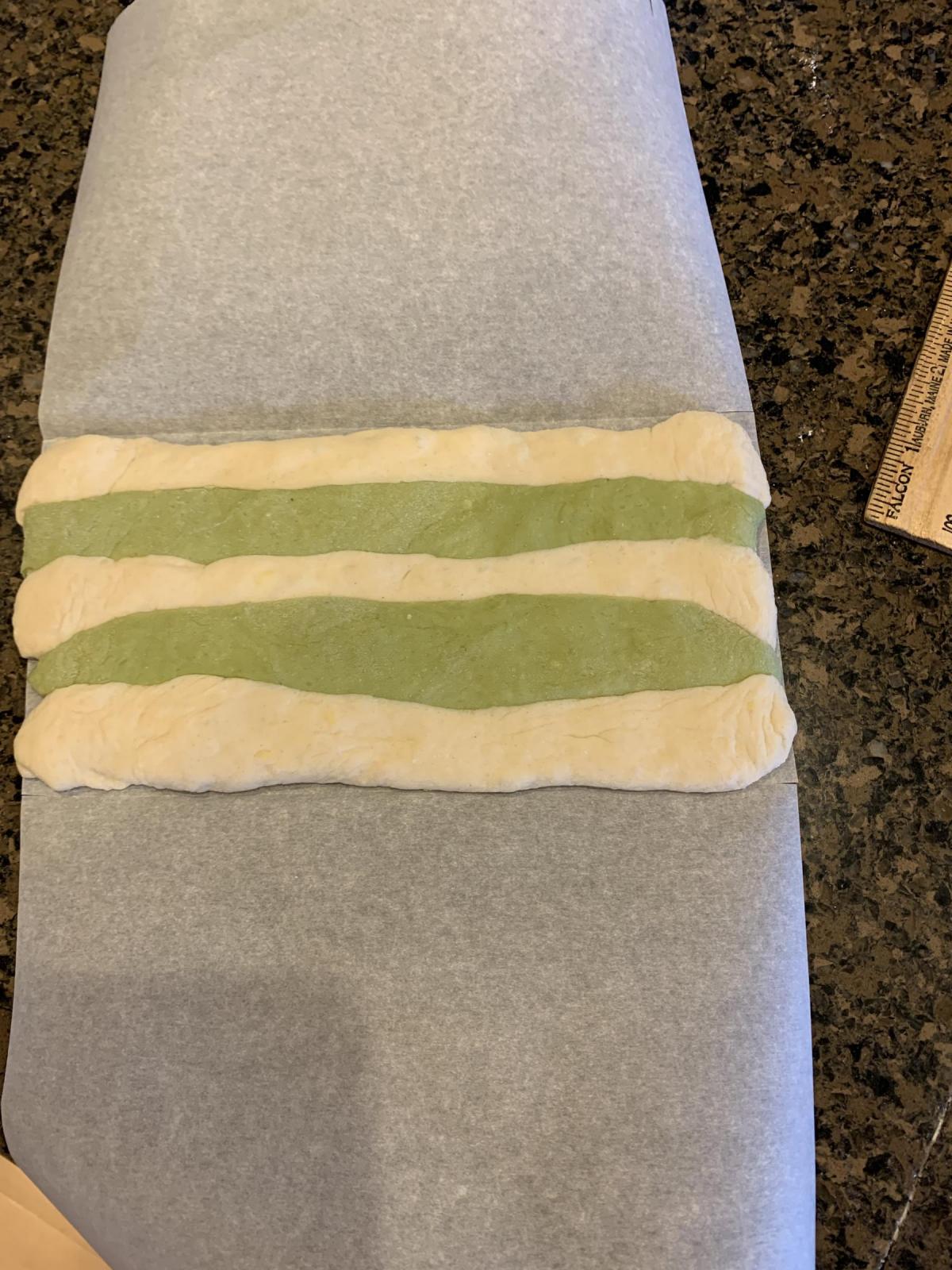
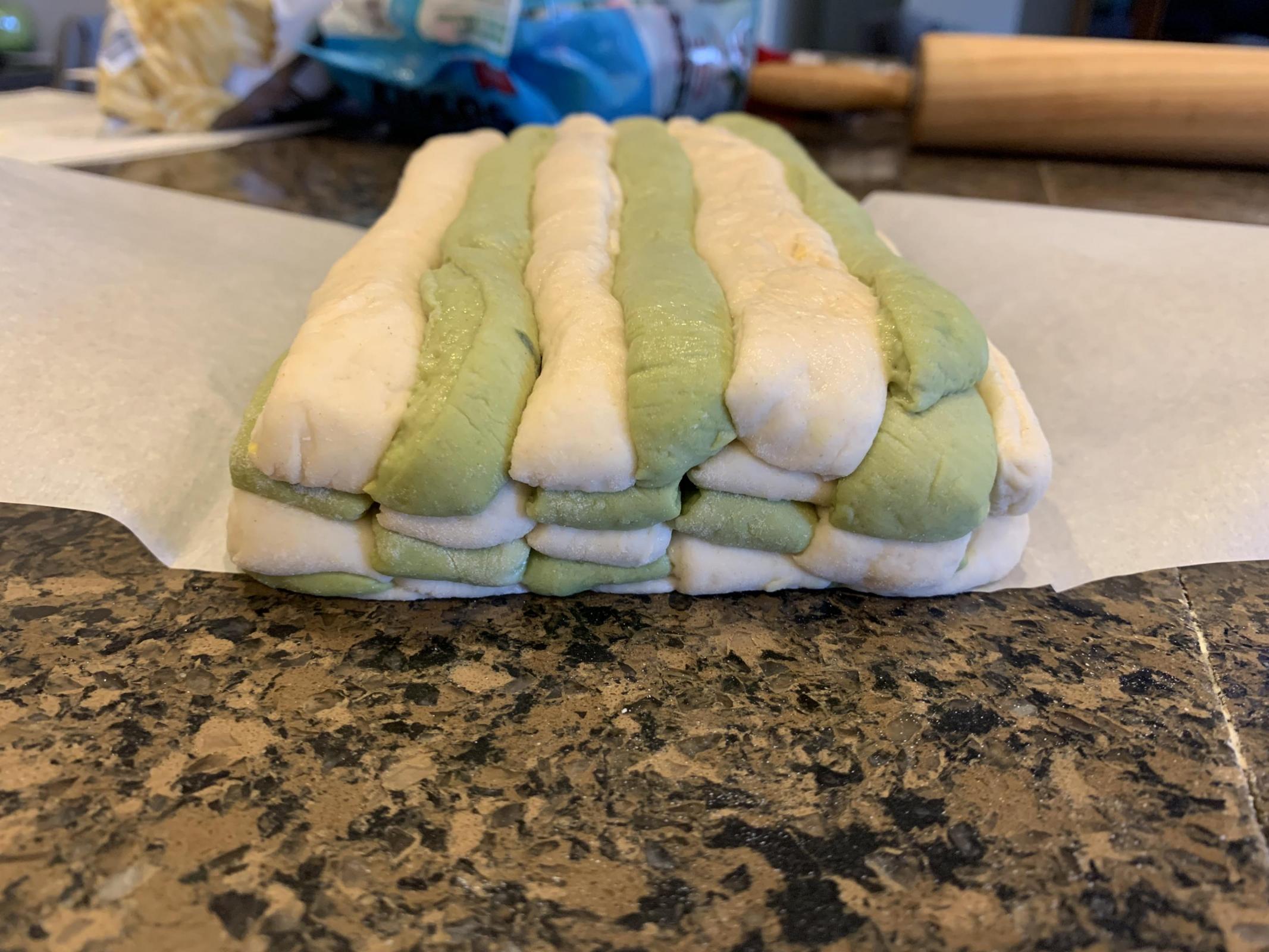
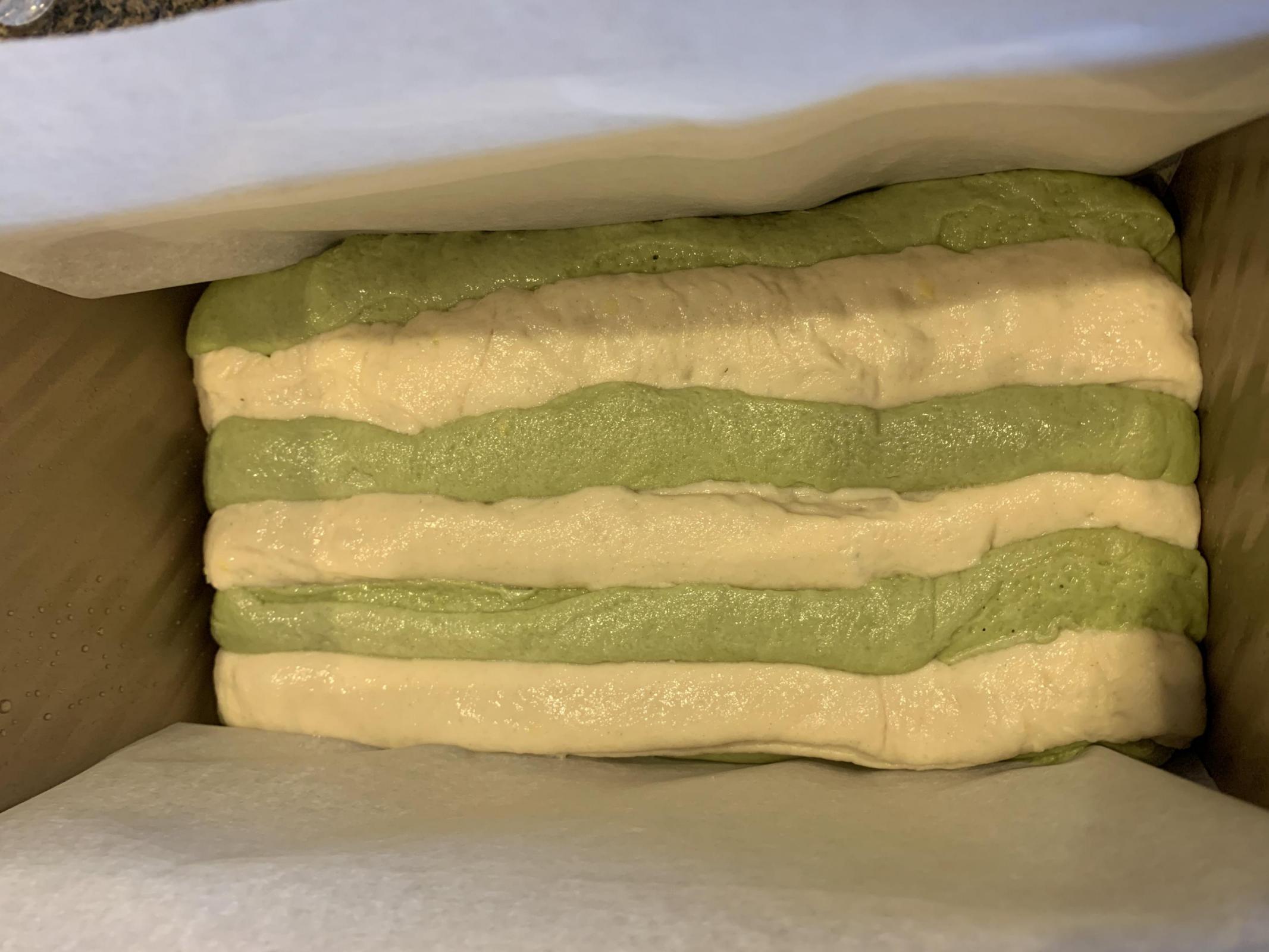
Allow the dough to roughly double in the loaf pan and then bake. Pre-heat oven to 400 deg F. Add 1/2 cup boiling water to steam pan on bottom oven rack. Bake for 7 minutes at 400 deg F and 8 minutes at 375 deg F. Vent oven and remove steam pan. Lower to 350 deg F and bake for 15 minutes. Remove loaf from pan and take off parchment paper. Bake directly on the center oven rack for 5 minutes at 350 deg F to set the crust.
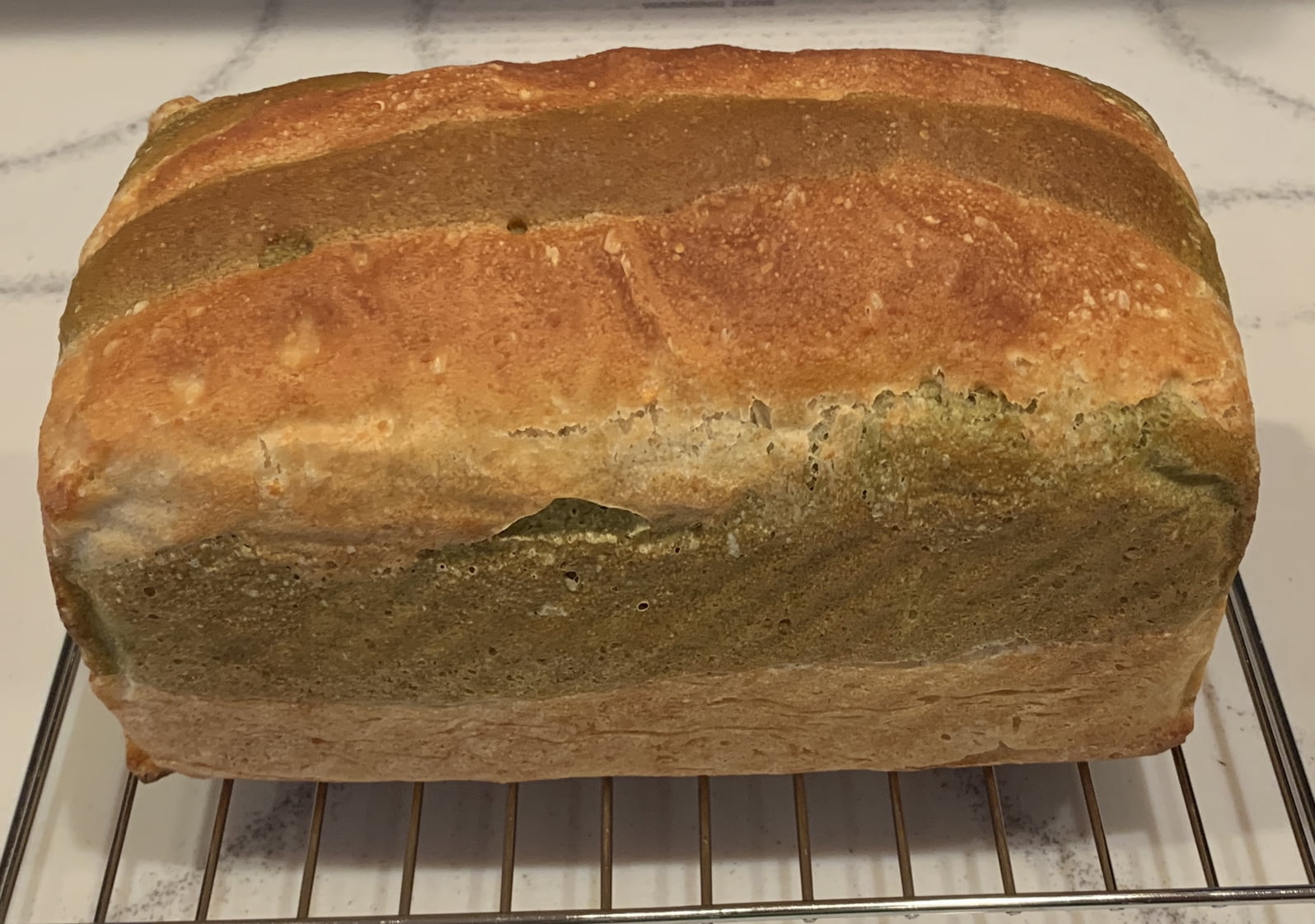
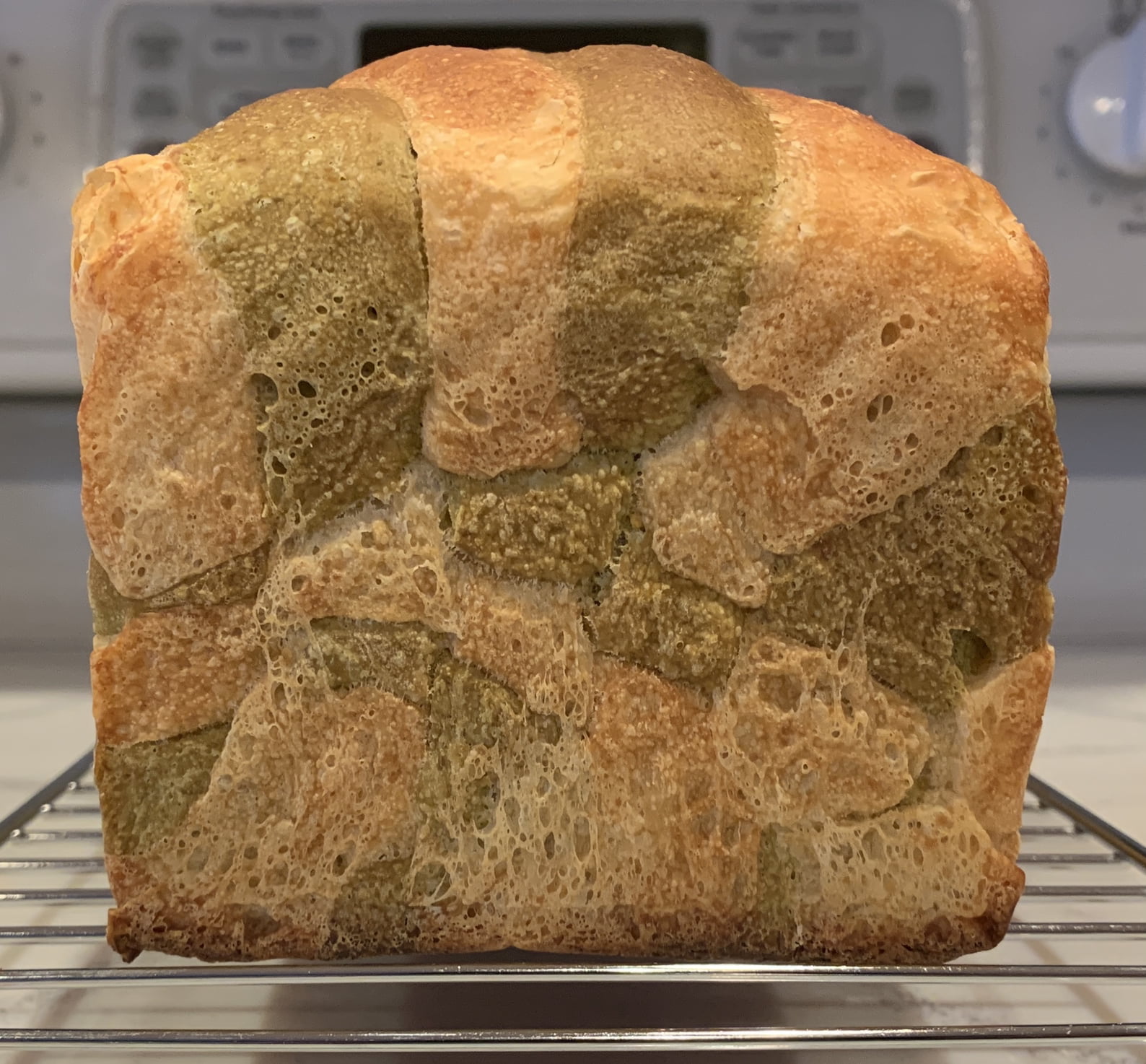
Should have waited till tomorrow morning before slicing, but I got impatient!
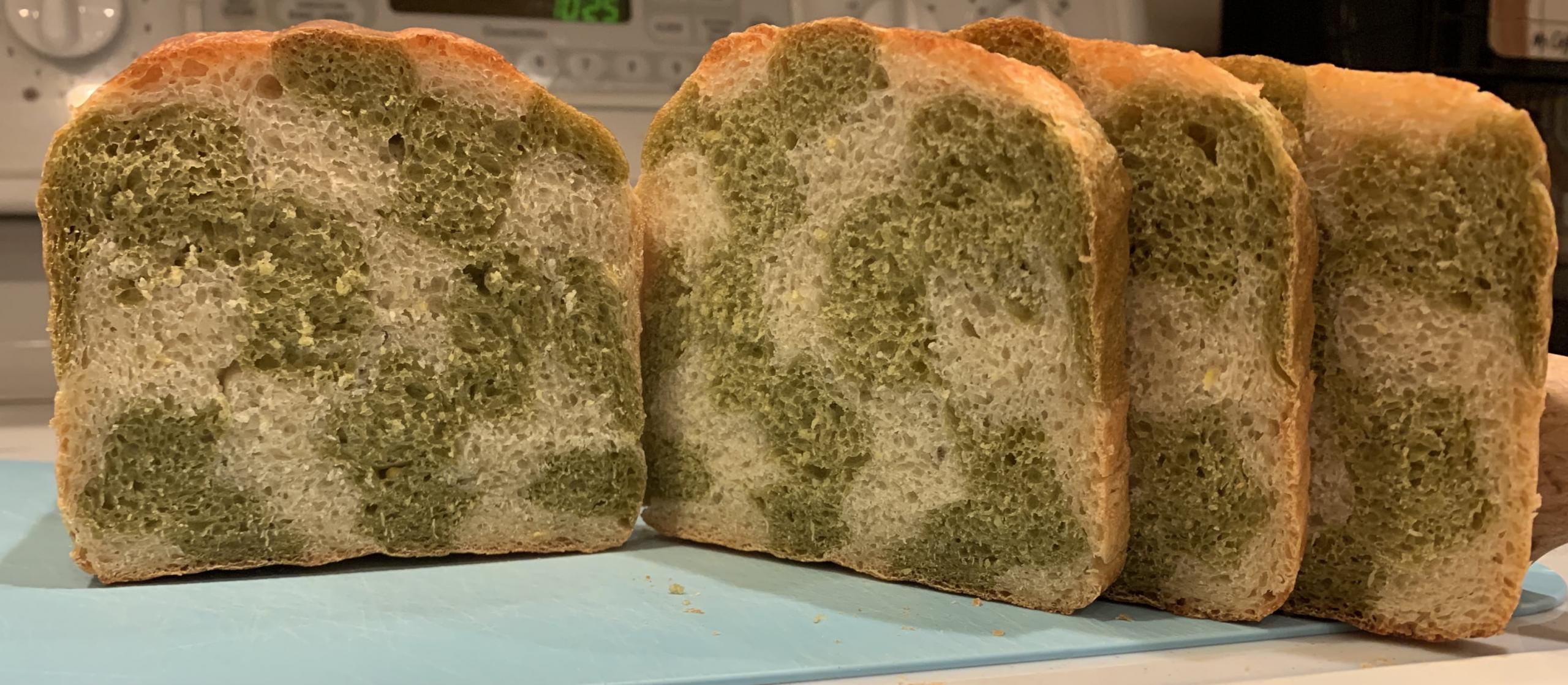
Crumb looks nice and custardy. Will be having this with fried eggs for breakfast in the morning. It has a very nice aroma from both the jasmine rice and the ginger root. However, the aroma is unlike anything I've experienced before. Curious how this one will be.
In case you're looking for gift ideas and haven't seen them before... My wife got me an early Christmas gift, and this bow knife is pretty slick. You can slice a soft bread very thin and precisely without deforming the loaf.
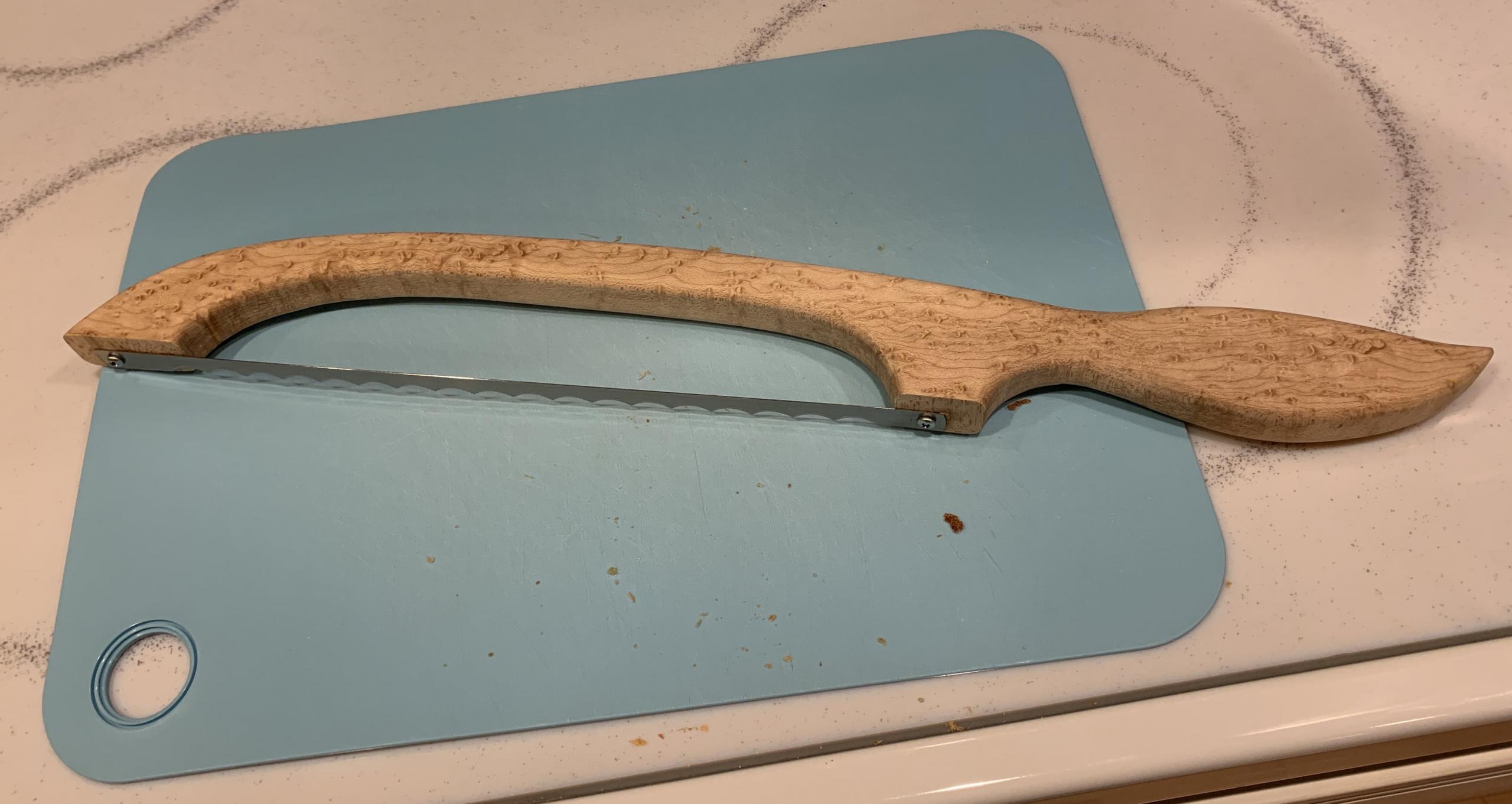

- HeiHei29er's Blog
- Log in or register to post comments
Hi Troy,
You gotta tell us how it tasted? Sounds super exotic, and love the bow knife.
-Jon
The bow knife really is nice. I had to put a little more tension in the blade, but once I did, it slices clean and easy.
I’m not sure I have a refined enough palette to give much of a description, but here goes. It is slightly sweet but quite aromatic. Some of that is definitely from the matcha, but not all of it. My first time using matcha, so I’m not sure what it’s like after baking. It is by no means overpowering. I do get aromas from the ginger root as well. I was expecting to bite into little pieces of it because I minced it relatively coarse, but guessing it softened a lot while cooking with the porridge. Definitely something I will make again, and maybe next time I’ll leave out the matcha or the ginger root so I can get a better idea of what each is contributing to the overall flavor. Although there won’t be two doughs and a checkerboard next time. That took way too long. 😁
Cool design!
I've been playing with mashing scalds. Imagine your porridge without sweetener or milk, but with diastatic malt and kept at 60c for 20 hours. Malt enzymes unlock the natural sweetness of the grains... wow. Of course you probably need to "mash out" by bringing the final porridge up to hot enough temp to denature the enzymes so they don't ruin the final dough.
I learned that from last weekend's experience :)
Thanks!
I’ve never used diastatic malt. Does it have much of a flavor or aroma? There’s already a fair amount going on with the jasmine rice, ginger root, and matcha.
I’ve done a few mash breads with corn, rye, and/or barley. I wonder if there are any enzymes in the rice that would naturally kick in without the malt? Would certainly be another variant of this recipe to try…
The malt itself is just sprouted grain (sprout reaching the length of the kernel) that is dried and milled into flour. You only use grams worth... I used 16g of malted rye flour in 600g of flour/water porridge. So the flavour change is more about what the malt does to the grain in your porridge ie. turning carbs into sugar. Example: I mashed dark buckwheat flour and bran from farro and rye with malt and after 12-20 hrs the porridge smelled like buckwheat honey. Tasted sweet. I was amazed.
My understanding is that enzymes are in grains for the purpose of turning the starches in the grain into sugar to feed the embryo that the grain grows to a plant. So by sprouting and malting the grain, we activate those enzymes. Then we dry out the malted grain to pause the enzymes. Then when we add the malted grain in the form of flour into a porridge or dough, the water reactivates the enzymes and they go about converting all the starches around them into sugars. That's why you need to denature the enzymes by raising the temperature of the porridge when you are done, to stop them.
For other grains, I assume you have to sprout them long enough to activat their enzymes in a similar manner.
This is apparently familiar to beer brewers who malt grains to activate enzymes, then mash them to convert grains to sugar to feed yeast to make alcohol.
What do you use to keep it at temperature for 20 hours?
I made a proofing box with pink foam insulation sheets and a dehydrator top (the part with the fan and heater). The porridge was in a mixing bowl inside a big ziploc bag. I setup an oven thermometer near a little covered window in the box. Worked a charm.
I'll be blogging the whole long adventure on the weekend when I've had a chance to do the whole process twice.
What a unique loaf. You've got some lovely ideas. Perhaps you could also try a turmeric latte bread with turmeric, milk, coconut oil and ginger and/or cinnamon? Ideally it should also have some pepper in it. Not a lot but just enough to bring out all the health qualities of the turmeric. I'm sure you could come up with something.
Thank you Abe for the compliment and the encouragement. You’ve helped me a lot over the last year, especially when I was still trying to figure out how to make my first loaf. Truly appreciate the kind words.
I haven’t dabbled at all with spices in my bakes, so I’ll need to give turmeric some thought!
Nice bake Troy, imaginative in terms of shaping (I’d call it camouflage patterned) and flavours. It can be hard to get the matcha quite right because if you use too much it can be too bitter unless you balance it with enough sweetness. I think it looks and sounds delicious.
Benny
Thank you Benny and camouflage pattern works! I like it!
The bread does have a nice flavor. I used it for toast with breakfast and a grilled turkey sandwich. I gave half of the loaf to a friend that said it was great toast with peanut butter . I’ll definitely make this one again. That amount of matcha was not bitter, but maybe the honey mellowed it out too.